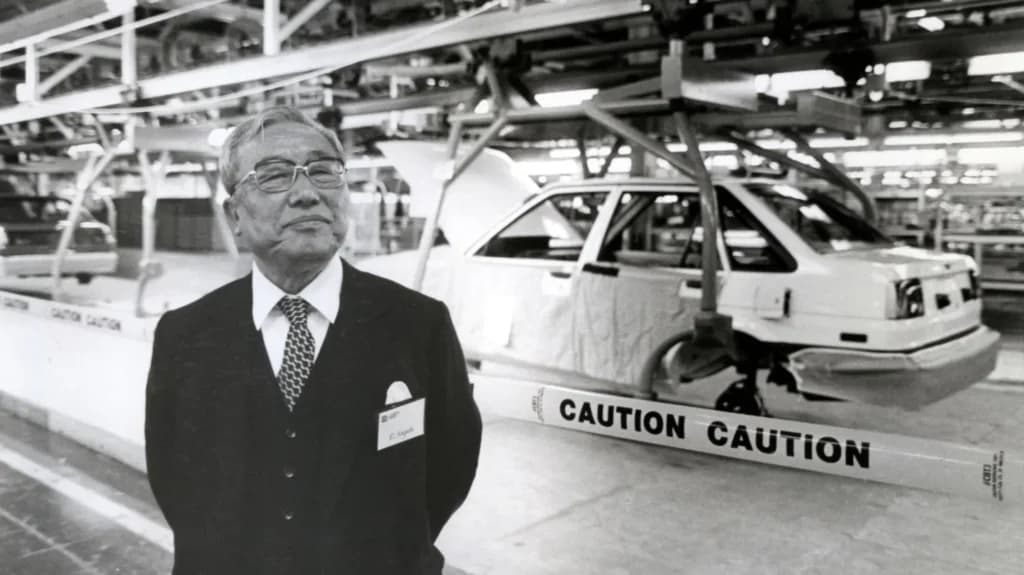
"Never give up looking for better ways!"
Eiji Toyoda
Chairman Toyota Motor Corp
- Date
How to Build a Culture of Continuous Improvement in Your Company
posted in Business Coaching

Adam Kreek
Most companies want better results. Fewer companies are willing to build the discipline of continuous improvement that actually produces them.
This is where Kaizen—the Japanese practice of small, steady improvements—comes in. Toyota, through its legendary Toyota Production System (TPS), turned Kaizen into a cultural force. It’s how they grew from a small post-war carmaker into the most reliable automaker in the world.
But Kaizen isn’t just for manufacturing giants. Any organization—no matter how small—can apply these lessons to spark innovation, increase discipline, and motivate people to do good work together.

Why Kaizen Matters
Kaizen is not about massive overhauls or radical breakthroughs. It’s about building a culture where everyone, every day, looks for small ways to make things better.
Eiji Toyoda, one of Toyota’s great leaders, famously said:
“Problems are rolling all around in front of your eyes. Whether you pick them up and treat them as problems is a matter of habit.”
At Toyota, this habit became second nature. Workers on the assembly line were encouraged to stop production if they saw a defect, fix it, and improve the process. That mindset—problems are opportunities—turned Toyota into the gold standard for quality and reliability.
The 6 Steps of Kaizen

Kaizen is simple, but it requires discipline. Here’s the classic 6-step cycle you can use in your company:
- Identify the Problem – Ask: Where are things breaking down? Where is time, energy, or money being wasted?
- Analyze the Process – Look at what’s actually happening, not what you think should be happening.
- Create Solutions – Brainstorm small, practical fixes. Don’t aim for perfection—aim for progress.
- Test Solutions – Try them quickly. Learn what works and what doesn’t.
- Analyze Results – Did the change make things better? Faster? Smoother?
- Standardize Solutions – Lock in the gains so they don’t slip away.
Repeat. Again and again. That’s how you build momentum.
How Small & Mid-Sized Companies Can Apply Kaizen
You don’t need assembly lines or robotics to apply Kaizen. What you need is a mindset. Here’s how smaller organizations can put it into action:
- Empower the front line – The best improvements come from the people closest to the work. Ask your team regularly: “What’s one small change we could make tomorrow?”
- Create space for reflection – Schedule quick weekly check-ins to review what worked, what didn’t, and what could be improved.
- Celebrate micro-wins – Recognize small changes just as much as big victories. This builds energy and keeps improvement alive.
- Use simple tools – Whiteboards, “shout-out boards,” or shared digital trackers can make progress visible.
Lessons from Toyota (and Four Videos to Inspire You)
We recently shared a blog on Toyota and Kaizen with four great videos that highlight how this system works in real life.
- How Toyota Changed the Way We Make Things – An overview of TPS and why reliability comes first.
- Kaizen in Action – Watch a team improve a process in real-time.
- The Rise of Toyota – The story of Toyota’s history, values, and resilience.
- Toyota’s Supply Chain Mastery – How inventory and improvement go hand-in-hand.

Building Your Own Culture of Continuous Improvement
Here’s the truth: Kaizen works because it’s not just a system, it’s a culture. It’s about training yourself and your team to see problems as opportunities, and to build the habit of small, daily progress.
It won’t feel dramatic at first. But over time, the compounding effect of hundreds of small changes will transform your company.
Start today by asking:
- What’s one small improvement we can make this week?
- How will we track it?
- How will we celebrate it?
Excellence is not built in leaps. It’s built step by step.
–––––
Adam Kreek is on a mission to positively impact organizational cultures and leaders who make things happen.
Kreek is an Executive Business Coach who lives in Victoria, BC, near Vancouver, British Columbia, Canada, and Seattle, Washington, USA, in the Pacific Northwest. He works with clients globally, often travelling to California in the San Francisco Bay Area, Atlanta, Georgia, Toronto, Ontario and Montreal, Quebec. He is an Olympic Gold Medalist, a storied adventurer and a father.
He authored the bestselling business book, The Responsibility Ethic: 12 Strategies Exceptional People Use to Do the Work and Make Success Happen.
Discover our thoughts on Values here.
Want to increase your leadership achievement? Learn more about Kreek’s coaching here.
Want to book a keynote that leaves a lasting impact? Learn more about Kreek’s live event service here.